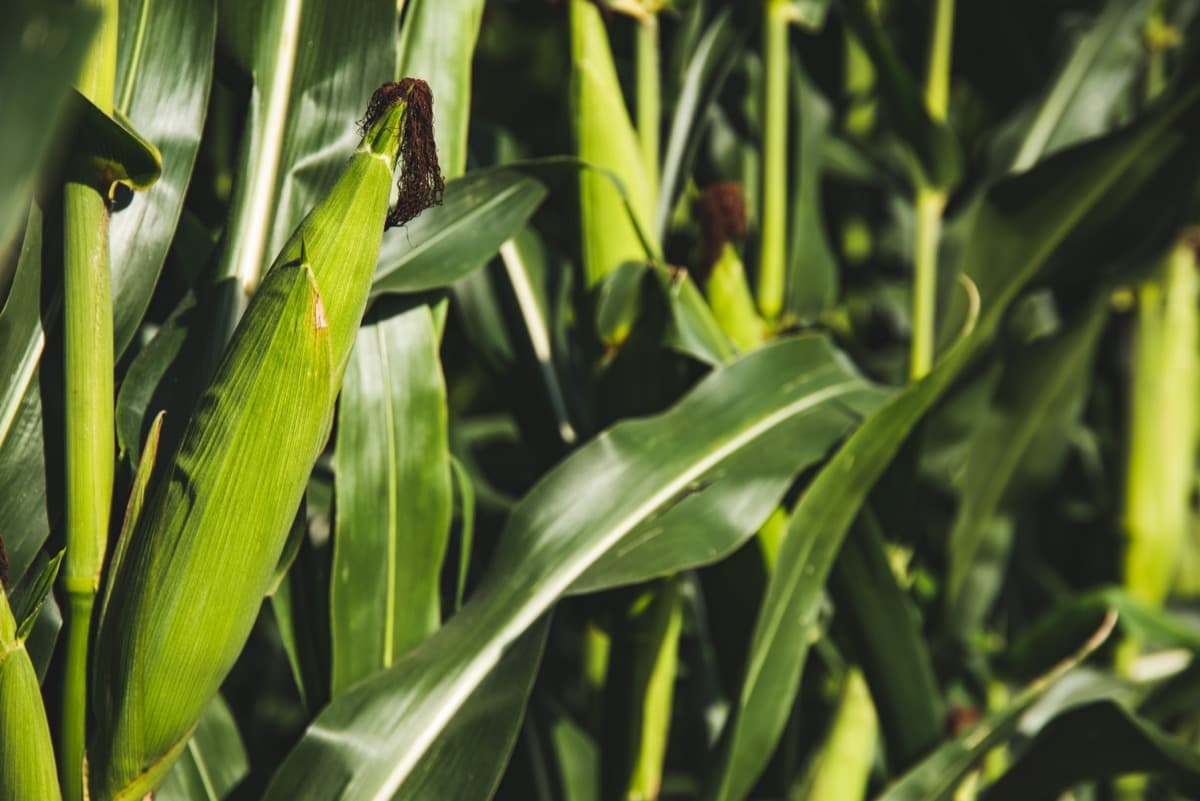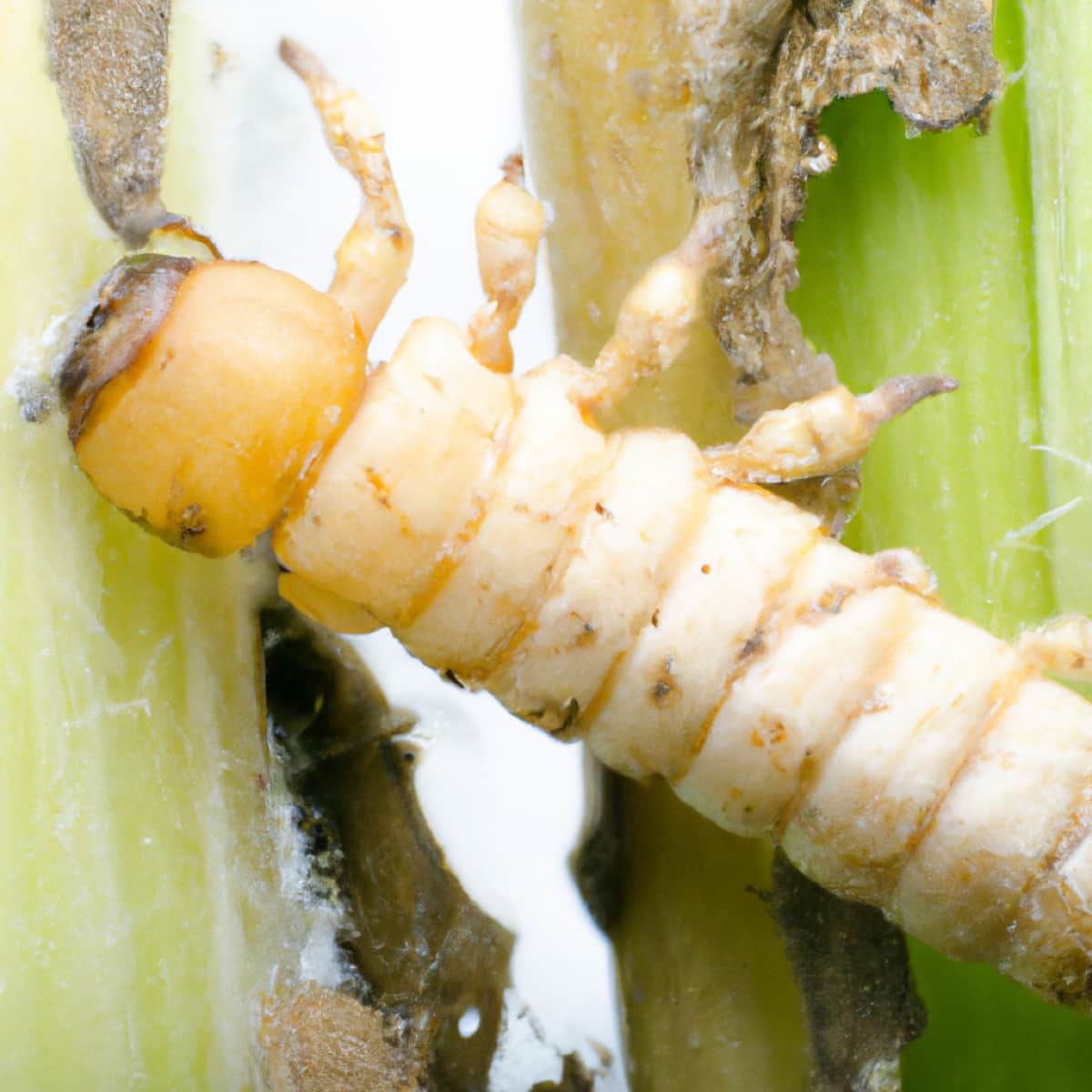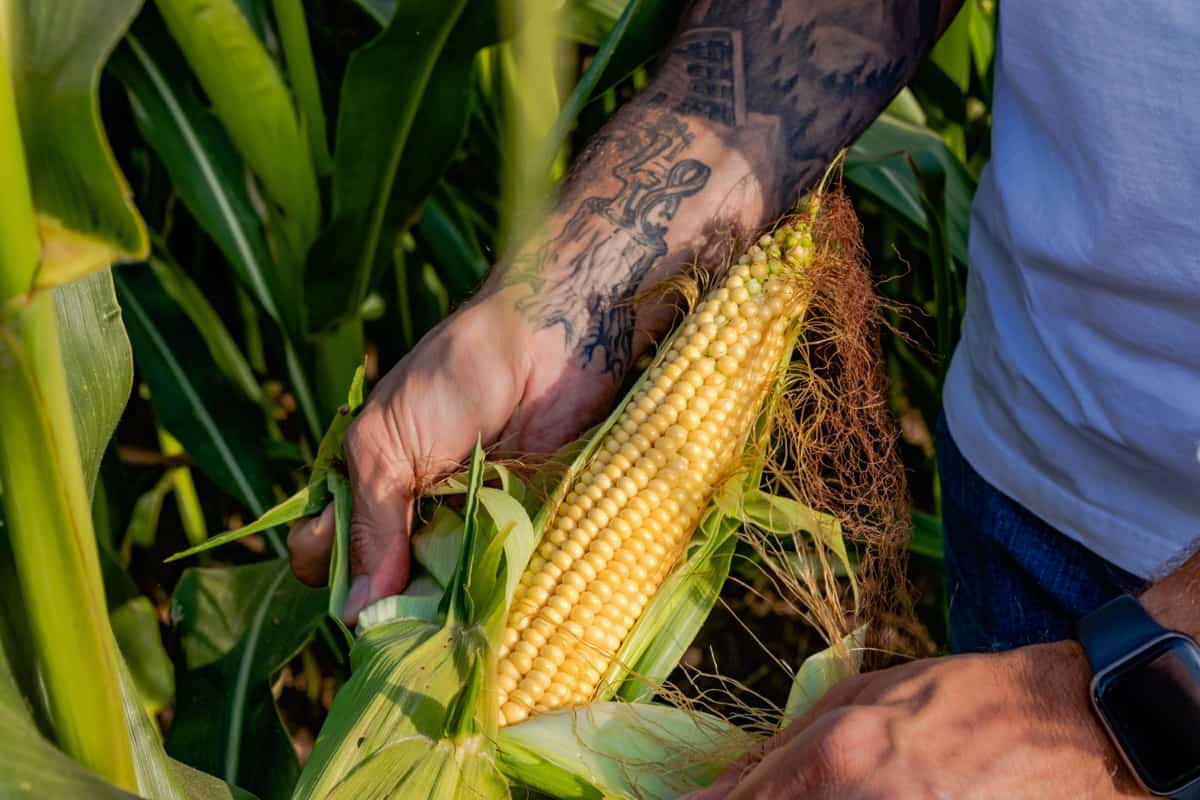The Maize Stem Borer, Chilo partellus, belonging to the Family Crambidae of the Order Lepidoptera, also known as the Maize Shoot Borer, is a highly destructive pest that attacks maize plants at all stages of growth, from seedlings to mature stalks. The larvae feed on the plant’s stem, leaves, and cob, resulting in significant yield losses.

They are especially damaging during the early stages of growth when the stem and leaves are still tender. To effectively manage this pest, it is important to understand its life cycle, its preferred habitats, and the best methods for controlling it. This article will provide an overview and discussion of the Maize Stem Borer Pest in Maize crops, including its symptoms, identification techniques, and control.
Maize Stem Borer Pest Management
Life Cycle of Maize Stem Borer Pest in Maize Crop
The life cycle of the maize stem borer consists of four stages: egg, larva, pupa, and adult. The egg stage begins the maize stem borer’s life cycle. The female moth lays eggs on the stems of maize plants. The eggs are usually laid in clusters of up to thirty. After a few days, the eggs will hatch into small larvae.
The larvae are the most destructive stage of the maize stem borer’s life cycle. The larvae feed on the stem of the maize plant, causing significant damage and stunting the plant’s growth. The larvae can also bore into the cob and feed on the kernels, causing further damage.
The pupal stage is the third stage of the life cycle. The larvae will spin a cocoon around themselves and enter a resting stage. During this time, the larvae will transform into pupae. The adult stage is the final stage of the maize stem borer’s life cycle. The pupae will emerge from their cocoons as adult moths. The adult moths can reproduce and lay more eggs, thus continuing the cycle.
Occurrence of Maize Stem Borer Pest in Maize Crop
- Location of maize stem borer pest: It is particularly prevalent in India, Sri Lanka, Indonesia, Iraq, Japan, Uganda, Taiwan, Sudan, Nepal, Bangladesh, and Thailand. In India, it occurs in Uttar Pradesh, Gujarat, Andhra Pradesh, Haryana, Himachal Pradesh, Jammu and Kashmir, Punjab, Tamil Nadu, Maharashtra, and Karnataka.
- Host range: The maize stem borer pest can infect different crops, including Jowar, bajra, sugarcane, rice, sorghum, millet, wheat, barley, and oats.
Factors Favoring the Population Increase of Maize Stem Borer Pest in Maize Crop
- Temperature and humidity – Maize stem borer is highly temperature and humidity dependent. The optimal temperature for the development of the pest is between 25-30°C. At this temperature, the pest’s development and reproduction rate will increase. High humidity in the atmosphere helps the larvae to feed and pupate properly.
- Natural enemies – Natural enemies of the pest, such as parasitic wasps, predatory insects, and birds, help keep the population of the MSB in check.
- Monocropping – Monocropping can lead to a decrease in the diversity of the crop and can make it more susceptible to pests.
Identification of Maize Stem Borer Pest in Maize Crop
- Egg: The eggs of the maize stem borer are small, oval-shaped, and yellow-white. They are laid singly or in clusters on the leaves nearer to the midribs of the maize plants.
- Larva: The larvae of the maize stem borer are white to light yellowish-brown with a brown head and approximately 3-4 cm in length.
- Pupa: The pupae of the maize stem borer are yellow-brown and approximately 2-3 cm in length. They are enclosed in a silken cocoon on the underside of the maize leaves.
- Adult: The adult maize stem borer is a medium-sized moth, typically grey-brown. The wingspan of the adult is approximately 3 cm in length. The adult moth is mainly active at night.
In case you missed it: Common Rust Disease Management in Maize: Symptoms, Treatment, Chemical, Biological, Natural, and Organic Control

Damage Symptoms of Maize Stem Borer Pest in Maize Crop
- The pest bores holes in the central shoot near the nodes, leading to the plants’ withering of central shoots and “dead hearts.”
- The larvae of this pest feed on young leaves, causing the “shot hole” symptom in the crops.
- The affected parts of the plants often comprise internally tunneling caterpillars.
- This pest infects the crop from 30 days after sowing until the emergence of the cobs.
Percentage of Yield Loss in Maize due to Maize Stem Borer Pest
The maize stems borer pest is one of the most devastating maize pests and is often known to cause yield losses of 5-50% in some countries. In the United States, if uncontrolled, maize stems borer can cause up to 25% yield loss. In Africa, the yield losses due to maize stem borer can be between 30-90%.
In China, the losses due to maize stem borer can be as high as 30% in some regions. In India, it can cause losses of up to 40%. Overall, it is estimated that maize stem borer can cause up to 25% yield loss in maize production worldwide if left uncontrolled. The ETL is 10% dead hearts.
Cultural Control of Maize Stem Borer Pest in Maize Crop
- Crop rotation involves alternating maize crops with non-host crops such as soyabean.
- Resistant varieties – Employ resistant maize cultivars like Him 129, Ganga 4,5,7 and 9, Ganga safed 2, Deccan 101 and 103, Him 123, Ageti, C 1, 3 and 7, Kanchan, and Kundan.
- Intercropping – Plant cotton, groundnut, lablab, or cowpea as an intercrop to minimize the stem borer damage. Plant 1 lablab for every four maize plants or 1 cowpea for every two maize plants.
- Sanitation – Remove and destroy by burning the dead hearts in the field.
- Traps – Set up the light traps in the field to kill the adult stem borer moths. And also, we can plant Napier grass in the field’s boundaries as a trap crop.
Biological Control of Maize Stem Borer Pest in Maize Crop
- Egg parasitoid – Release 2.5 lakh Trichogramma chilonis per hectare at 7 and 14 days after crop germination.
- Larval parasitoid – Third release of Trichogramma chilonis and 5,000 Cotesia flavipes (larval parasitoid) per hectare at 21 days after crop germination.
- Pupal parasitoid – Release Xanthopimla stemmator or Tetrastichus howardii by coinciding with the pupal phase of the pest.
- Predators – The natural predators that can kill adult moths include, Chrysoperla carnea, coccinellids, spiders, earwigs, dragonflies, preying mantids, Pentatomid bugs, reduviid bugs, robber flies, rove beetles, wasps, king crows.
Chemical Control of Maize Stem Borer Pest in Maize Crop
- Granular insecticides – Mix any of these insecticides, Phorate 10% CG 8-10 kg or Carbofuran 3% G 17 kg or Carbaryl 4% G 20kg/ha or Carbaryl + Lindane 4G 20 kg or Endosulfan 4% D 10 kg, with sand up to 50 kg and apply the mixture in the leaf whorls after 20 days from sowing.
- Spray insecticides – Spray Endosulfan 35 EC 750 ml or Carbaryl 50 WP 1 kg (500 L. spray fluid/ha) or Chlorantraniliprole 18.5 SC 150ml/ha or Dimethoate 30% EC 660 ml/ha after 20 days from sowing.
Preventive Measures for Control of Maize Stem Borer Pest in Maize Crop
- Collect and burn the crop debris to destroy the dormant borers in the field in a diapause state.
- Planting early-maturing varieties of maize can reduce the incidence of pests. This is because they will mature before the stem borer larvae are fully developed.
In case you missed it: Charcoal Rot Disease Management in Maize: Symptoms, Treatment, Chemical, Biological, Natural, and Organic Control

Conclusion
The Maize Stem Borer is a serious pest of maize crops, causing extensive damage to the plants, leading to reduced crop yields and quality. Therefore, control measures must be taken to reduce the impact of the Maize Stem Borer, such as crop rotation, insecticide application, and the introduction of beneficial insects and cultural practices. Farmers can protect their crops and maximize their yields by implementing these measures.
- Beneficial Insects in Pest Management
- Natural Solutions for Pest Control in Flower Gardens
- Types of Fungicides Used in Agriculture
- Common Issues in the Fruit Development Stage of Pomegranate Farming
- Fruit Development Issues in Papaya: Easy Solutions and Treatment
- Soil-Borne Diseases and How to Protect Your Plants
- Practices to Prevent Disease Spread in the Garden
- From Wilted to Thriving: How to Treat Root Rot Naturally in Houseplants
- Natural Remedies to Cure Brown Spots on Fig Tree Leaves